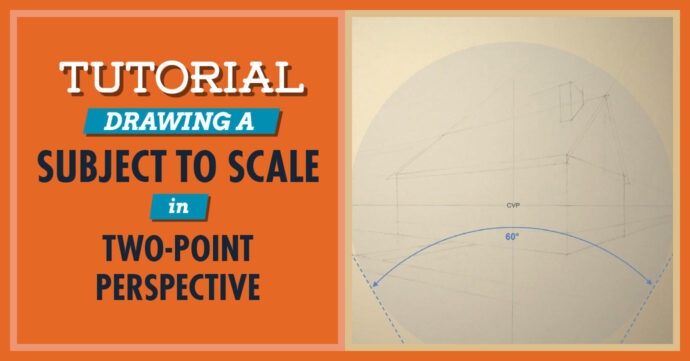When drawing in perspective, it can often be useful to know how certain distances in your drawing relate to distances in reality. Such a scale of "art to reality" is expressed as a ratio, such as "1 inch (in the drawing) equals 2 feet (in reality)," or more simply, 1 inch : 2 feet.
The advantage of knowing the scale of a drawing is that it ensures the various parts of the drawing are correctly sized in relation to each other. In a perspective drawing, this is particularly important because of the way that perspective distorts sizes as objects go back in space.
With a scale, an artist can draw a window toward the back of a building with the correct size relationship to another window at the front of the building, for instance. Or any other objects can be drawn with the correct size relationship to each other, regardless of their position in space.
A scale does not have to compare inches to feet, though these units often work well for the size of a typical drawing and that of many subjects. Comparing centimeters to meters also works well.
This tutorial demonstrates how to draw a subject (in this case, a house) in two-point perspective, and to establish a scale for the drawing. Follow along carefully, because as with most lessons in perspective, the descriptions can sometimes be complicated.
By the end of this tutorial, you should be able to:
- draw an object to scale in two-point perspective, at any angle of rotation
- use that scale to accurately size and position objects
There are 9 steps in this tutorial. When you're ready to begin, start the tutorial by clicking here or on the banner above (tutorial opens in pop-up window).


Leave a Reply